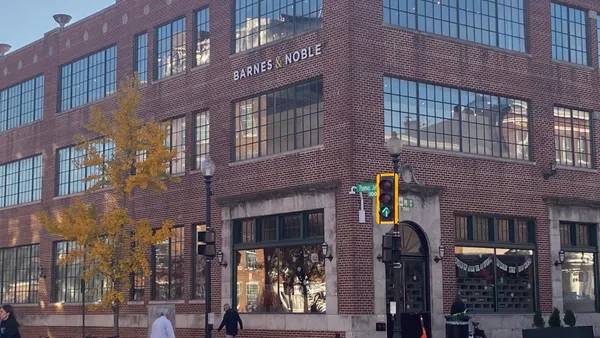Dive Brief:
- J.C. Penney has eliminated about 650 jobs in an effort to adjust "our structure to better meet our strategic priorities," according to a company statement.
- The layoffs came out of the retailer's corporate, field and store teams. They followed an operational review by new owners Simon Property Group and Brookfield Asset Management.
- All told, Penney still has more than 50,000 associates, according to the company. "While it is never easy to make decisions that directly affect our valued associates, the actions last week ... were a necessary step to ensure the long-term success of our Company," Penney said.
Dive Insight:
While in Chapter 11 last year, one of the key points made by J.C. Penney attorneys as they tried to move a deal to sell the retailer first through negotiations and then through the court approval process was that the acquisition would save jobs.
By many accounts, it did. In court testimony and statements, professionals engaged by the retailer said that without the deal, Penney likely faced liquidation. Simon and Brookfield were the only parties willing to put up a significant amount of cash. Without the deal, secured lenders could have sought repayment by shutting the nearly 120-year-old department store chain down and selling off its inventory.
Such a fate has befallen plenty of retail companies in recent years — rival Bon-Ton, Toys R Us, Payless Shoesource and many others. In those cases, most all workers were cast off into the job market with little to show for compensation.
While Simon and Brookfield prevented that scenario, J.C. Penney has still lost tens of thousands of jobs since it entered bankruptcy last year at the height of the financial disruption created by COVID-19. At the time that it filed, the retailer had 85,000 employees. That number shrank as the chain closed stores and made layoffs in its corporate workforce in Chapter 11.
Compared to the 35,000 jobs lost over the past 12 months, the latest cuts under Simon and Brookfield —previously reported on by Dallas Morning News — are relatively modest, accounting for a small portion of the company's corporate and store teams.
Simon and Brookfield may have saved Penney from brick-and-mortar oblivion, but the retailer still has a long and likely difficult turnaround path ahead. As recently as the fall, the retailer was still suffering traffic declines larger than its peers as well as market share loss.
It's open to debate whether Simon and Brookfield, as major landlords to Penney, saw much to gain in buying the retailer or were rather trying to stem losses to their malls by keeping Penney intact. Doing so not only preserved anchor spots that Penney occupied but could also have prevented a cascade of other exits by stores with co-tenancy clauses in their leases.
Since its acquisition, Penney has continued trying to adapt to a difficult department store sector, which has suffered from online, off-price and direct-to-consumer competition along with changing consumer preferences. The retailer has launched private label apparel and home goods brands, and cut exclusive merchandising deals.
Penney and its department store peers are likely poised to have a significant rebound from last year's collapse in sales and traffic, as COVID-19 vaccines and economic growth boost sales.














